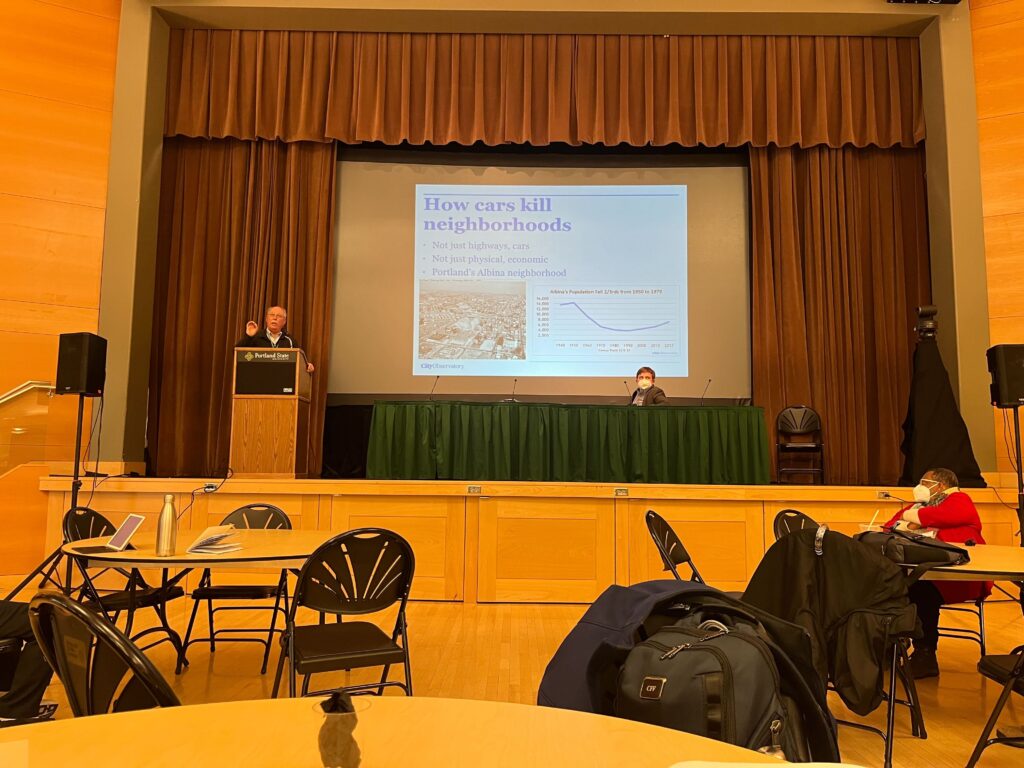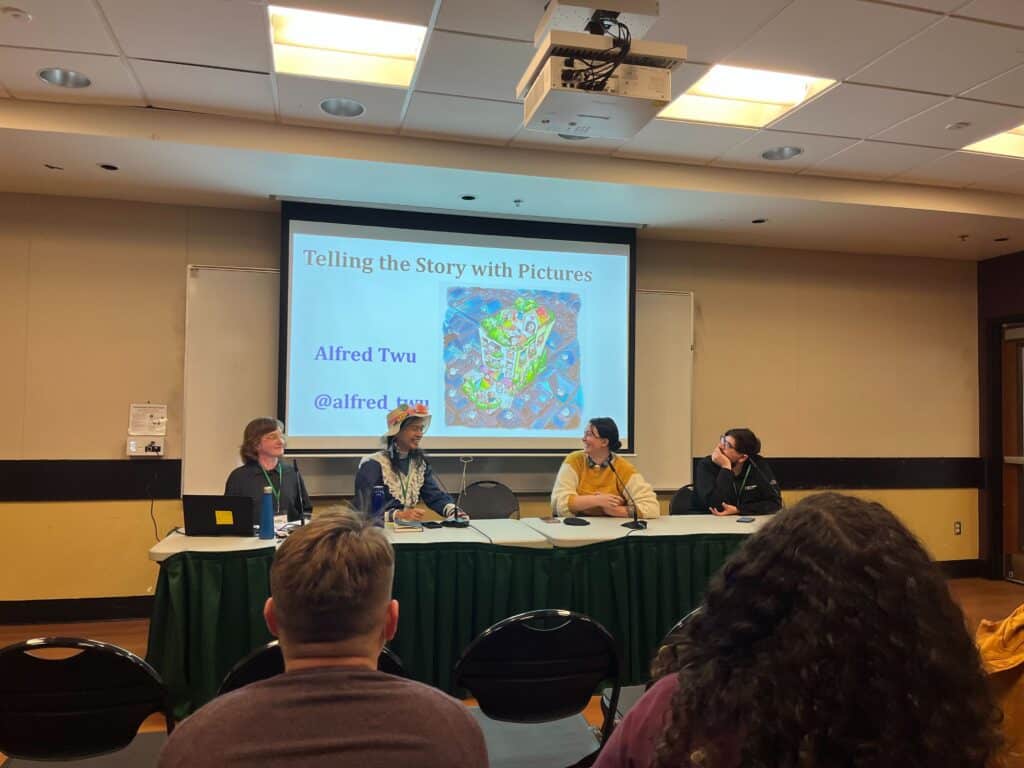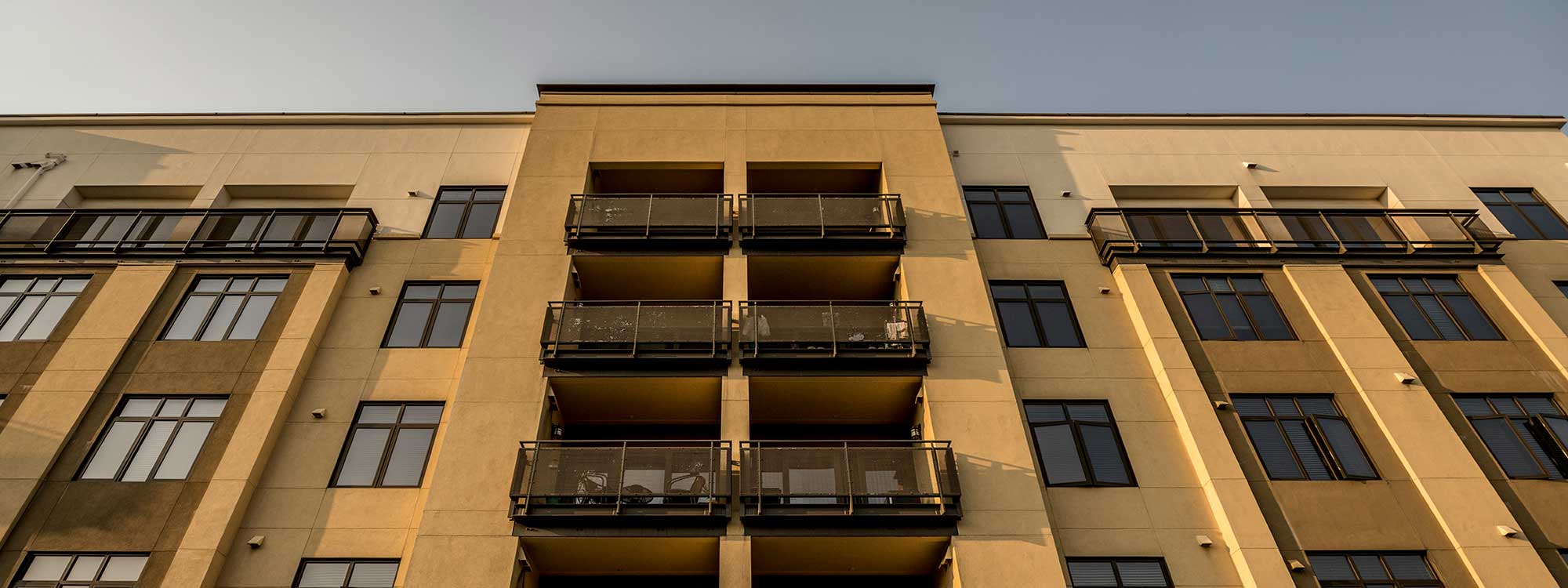In April, I was fortunate enough to attend YIMBYtown, an annual North American housing conference that is a catalyst for unifying housing organizers, funders, builders, and thought leaders. This year, after a long-awaited COVID-19 hiatus, YIMBYtown 2022 took place in Portland, Oregon. At the conference, I represented Greenbelt Alliance and the environmental case for housing. I met a range of passionate housing advocates, YIMBYs (Yes In My Back Yard advocates), and environmentalists from across the nation. Here are my key takeaways.
The @YIMBYtown Conference kicked off today in Portland and our very own Karen Rosenberg is there to represent @gbeltalliance! We’ll share cool updates about what we 👀 and👂 at this gathering of grassroots community organizers, political leaders, housing providers, and more! pic.twitter.com/QOPpnu6DLr
— Greenbelt Alliance (@gbeltalliance) April 12, 2022
Day 1: When talking about environmental justice issues, tree equity must be addressed!

To kick off YIMBYtown 2022, I attended my first breakout session “More Trees for More Neighbors.” Trees play an integral part in human existence, but with modern industrialization and urban sprawl, trees are often put on the backburner. Presently, we are seeing that trees serve as a nature-based solution to climate change but also represent an environmental justice issue as formerly redlined communities/communities of color often have fewer trees. This results in the urban heat island effect, which can lead to heat-related illness and sometimes death. A simple solution to this is to plant more trees! Oftentimes, abundant housing means a tradeoff for fewer trees, but it was stressed that when tree cover is prioritized in design, we can accomplish both high-density housing and trees, which create a canopy for shade that ultimately lowers temperatures.
Day 2: In order to better advocate for issues we care about, we need to learn how to be better communicators.

Berkeley’s own Alfred Twu presented about storytelling. I learned that storytelling is the key to advocacy work. By building a captivating narrative in a highly distracted world, you can more effectively engage your audience. With your audience in mind, telling stories with pictures can help display complex issues in a non-threatening, easy-to-understand way. Twu showed us a plethora of his artwork and explained how simple changes to perspective and the use of color can transform the message you are trying to display. Oftentimes the issues Greenbelt Alliance advocates around can be filled with technical jargon, but we have made strides to meet people where they are by improving our visual and written communications, becoming better storytellers in our journey to make the Bay Area more resilient to climate change!
Day 3: The term “YIMBY” may no longer be the most accurate term to describe the housing movement.
The term YIMBY or “Yes In My Backyard” stemmed from the need to reframe the conversation around the positives of housing choice and oppose the NIMBY or “Not In My Backyard” perspective. The breakout session around the term YIMBY began with everyone ranking on a scale of 1-5 how much they align with the phrase. To my dismay, a majority of the participants’ responses leaned towards not identifying as a YIMBY. The session began to break down the ideals and morals that coined the phrase YIMBY. One of the key critiques about the term was that it may be outdated and even exclusionary, restricting power to homeowners with backyards. For communities of color, this phrase can be very toxic and actively cause harm seeing as it was coined by those coming from a place of White privilege. Additionally, it is not the idea that people cannot afford any housing, it is that they cannot afford the kind of house they want—transit-oriented, near jobs and local businesses, built to be resilient and adapt to climate change. Rather than using the term YIMBY, the group was challenged to come up with a more visionary and inclusive phrase for the movement. General consensus revolved around the words: welcoming, happy, neighbors, and for everyone. A happy city may look different for every individual but it is something we can strive towards in the housing movement. While we did not unanimously decide on what would replace YIMBY, it was an enlightening exercise that forced us to reanalyze our goals and values as they relate to people and housing.
big thanks to @1000oregon’s Sam Diaz, @homelessnesspdx’ @DrMarisaZapata, @AlbinaVisionPDX’s @RukaiyahAdams, @TheAtlantic’s @JerusalemDemsas and @OPBTOL’s @DaveMillerOPB for speaking at tonight’s #YIMBYtown finale. Grateful for all in attendance; abundance is a blessing. pic.twitter.com/vZQ4IgRzUJ
— YIMBYtown 2022: April 11-13 (@YIMBYtown) April 14, 2022
Conclusion
Looking ahead, I hope to take advantage of the connections I made and the key takeaways I had throughout the conference in order to better advocate and educate the Bay Area on climate resilience and just housing for all.





